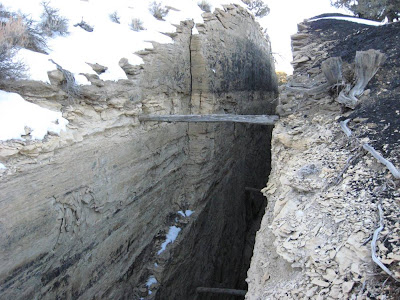I'm too tired to post about a ghost town. Or anything else. So leave me alone. But I do feel bad about leaving my twos of readers out in the cold. So here's a little tale of this one time I saw a ghost/was sleepy.
Twas late in my room, and naught but the steady bubbling of my fishtank was to be heard. I sat awake, as was the style at the time. I was getting tired, and soon found myself in that nearly asleep mode where you might be snoring, but you also would hear someone come into the room. Before I had fallen almost asleep I had decided to read a passage or two from "Where the Wild Things Are"as for some reason I felt like it had been far too long since I had read a relatively creepy book about monsters and crazy preteens that live in rooms that morph into jungles. I read what I needed, and then placed the book on the head-board above my head. Falling asleep, I remember feeling oddly uneasy, but I dismissed the feeling as a "Wild Things" hang-over.
Heh, let me interject here, if I may, with a joke that I just thought up...
Q: What kind movies to do mosters watch at Spring Break?
A: Wild things gone wild! or perhaps Wild things gone wilderer. Gene Wilderer....I dunno. This joke sucks.
Anyway, I entered the half-asleep world and there I stayed for a time. Suddenly, my leg jerked without permission, as is aught to happen sometimes when one is in half-sleep. Down came the Wild Things and bonked me on the head. I awoke with a start from my drooling state, and instantly my eyes met something altogether not-entertaining. A figure of a person was standing at the foot of my bed. It wasn't towering over me, nor did it have tenticle for arms or snakes for hair or plaid socks. Just a person, standing and watching. I sat up, more confused than anything. What was going on? Why was there a copy of "Where the wild things are" smacking me on the head? Why was I drooling despite the fact that I was partially awake? Why was there a shadow person at the foot of my bed? Mostly that last one. I stared for a second at the figure who stood out distinctly from the rest of the moonlit room. It did not more, make a noise or anything. I freaked out, as one is aught to do when dealing with shadowy-folk, but before I could run the thing just disappeared. Faded, really. Like a hologram onboard a starship running on failing back-up generators. Within a second it was gone, but the unease and stark terror remained. And so I ran out the room and into the hallway, which was no better because it is well known to me that the hallway is the most terrifying part of the house. Long and forbidding, the hallway featured many mirrors at all ends, as well a number of objects that cast strange shapes all over the walls in the light of the nightlight. So I ran down to the living room and slept behind the couch. There I was safe. Far away from where the wild things are. Er, were. So anyway, yeah, ghosts are spooky.
There. I will post something better later. But tired now. Sleepy time. Leave lone.


















 The town of Dragon would have been a great place to visit, but it is a good 12 miles further down a creepy dirt road and I couldn’t be bothered. Apparently a good-sized fire started in the Gilsonite vein there in 1908 and burned for over 2 years. Then in 1910 the warehouse burned down and took out a bunch of Gilsonite that people had already dug out. It appears that the town of Dragon had a fire problem, which seems fitting.
The town of Dragon would have been a great place to visit, but it is a good 12 miles further down a creepy dirt road and I couldn’t be bothered. Apparently a good-sized fire started in the Gilsonite vein there in 1908 and burned for over 2 years. Then in 1910 the warehouse burned down and took out a bunch of Gilsonite that people had already dug out. It appears that the town of Dragon had a fire problem, which seems fitting.


















